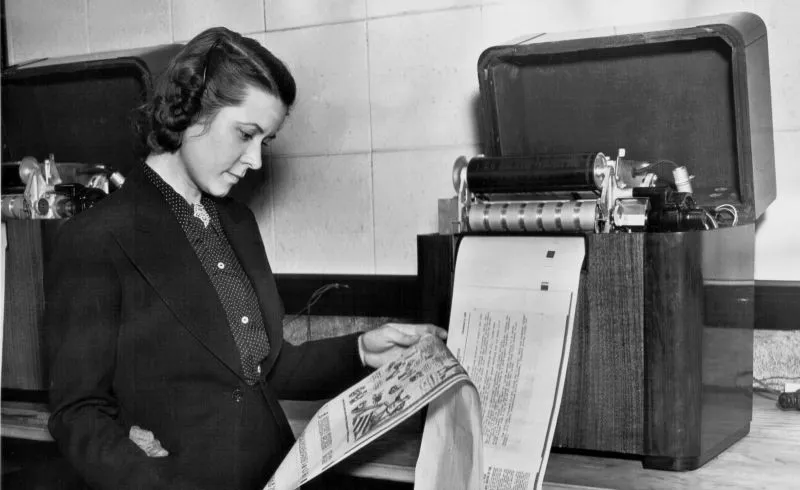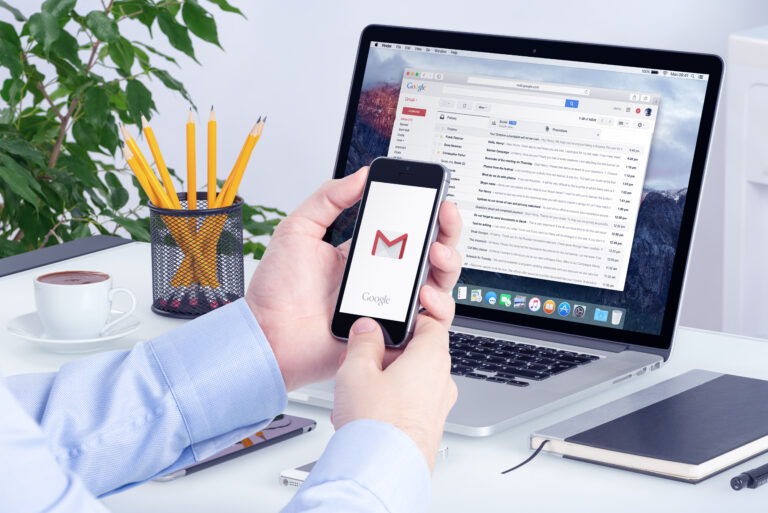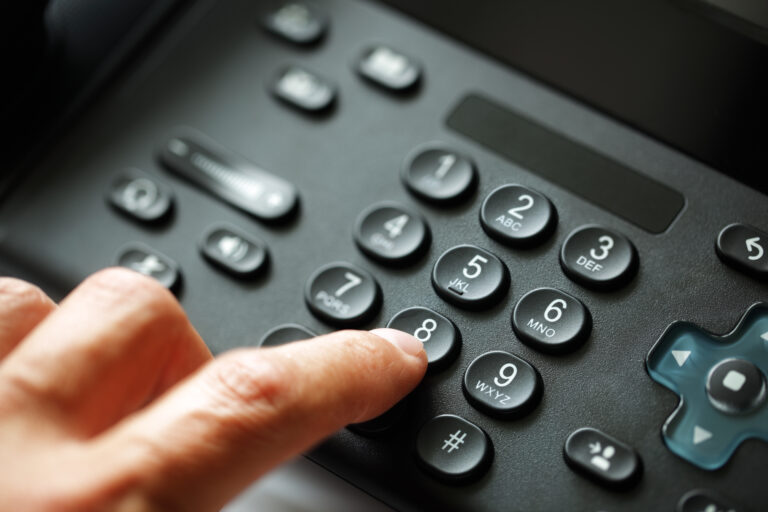Most people think of faxing as a technology of the 1980s, but the fax machine can trace its roots back much further — all the way back to the 1840s. Fax technology predates the telephone and still remains relevant today. This guide will trace the history of the fax machine from its invention to its modern manifestation.
How Far Has Fax Technology Come?
Although we’re accustomed to communicating across the globe in real time, that wasn’t possible until very recently in human history. However, humans have always tried to expand our communication powers. The fax machine played a pivotal role in our efforts to connect with each other across long distances.
1843–1880: Starting With the Transmission of Images
The forerunner to the fax machine was the electric printing telegraph. The Scottish inventor Alexander Bain created it in 1843 to transmit a two-dimensional image using two perfectly synced pendulum clocks to copy the design. Though the machine worked, it was extremely slow and not efficient enough for widespread use.
In 1851, Frederik Bakewell debuted his own version of the fax machine. Neither his nor Bain’s fax machines were ever commercially available, but they laid the foundation for the technology to come.
In 1880, Shelford Bidwell created the scanning phototelegraph machine, a breakthrough device that was the first to fax images via scanning. The picture was wrapped around a cylinder, scanned with light pulses, and converted into an electronic current that could be transmitted over telegraph wire.
Giovanni Caselli invented the pantelegraph machine and offered the first commercial use of a telefax in 1865. It would be 11 years before Alexander Graham Bell patented the telephone.
In 1888, Elisha Grey invented the telautograph machine — a device that used a short-line telegraph to send signals that transmitted handwritten notes or drawings from one machine to another via electric currents.
Arthur Korn took this technology to the next level with his Bildtelegraph around 1902. By 1908, this early facsimile machine gained widespread use for transmitting newspaper photographs between Berlin and Munich.
1924–1948: Evolving up to the First Desktop Fax Machine
In 1924, two breakthroughs put us on the road to 20th-century modern fax machines. Richard Ranger, while working for RCA, invented the wireless photoradiogram and sent a picture from New York to London using radio waves. The president at the time was Calvin Coolidge, so Ranger sent a picture of him by using this machine.
Another leap made that year by AT&T scientist Herbert Ives was the transmission of a color photograph by dividing the picture into separate red, green, and blue images. Instead of another photo of Calvin Coolidge, this picture was a famous movie star at the time — Rudolph Valentino.
In the 1930s, a company called Finch Facsimile sold printers that worked with ordinary radios common in most households at the time. These thermal printers could print off newspapers using AM radio frequencies. However, the equipment cost up to $250 while newspapers were 10 cents, so the idea never really took off.
In 1948, Western Union radiofax receivers were smaller and offered as a “desk-fax” service. This service was used until the 1960s, which ushered in the telephone faxing era.
1964: Moving From Electrical Wiring to Telephone Wires
The first version of what would become a traditional fax machine was invented by the Xerox Corporation in 1964. It was called long distance xerography, and it was replaced two years later with a more compact version — only 46 pounds — that could be connected to standard telephone lines. The technology available at this time could fax a single page of letter-sized documents in six minutes.
Faxing machines continued to progress, becoming smaller, lighter, and faster as more competition developed. The use of telefax machines to transmit faxed copies of confidential and time-sensitive information spread until fax lines were standard in almost every office and quite a few homes.
1985: Producing the First Computer-Based Fax Board
In the early days of the internet, Hank Magnuski founded GammaLink. The computer company introduced the first personal computer fax board, called GammaFax, in 1985. The company was ahead of its time, however, and it would be years before internet faxing became popular.
1996-Present Day: Rising Popularity of Online Faxing
As more and more people started using personal computers, many types of fax transmissions were replaced by emails. Documents that aren’t confidential can easily be sent through email without using fax machines or technology. In many circumstances and industries, however, faxing is still standard. Technology has once again evolved, and today’s faxes are often sent via internet connections rather than phone lines.
Online fax services allow you to use your smartphone, tablet, or computer as a fax machine. You can create an account, choose a plan, and send and receive faxes immediately. Online faxes send digital files to other online fax numbers or traditional fax machines directly from your email. You can also fax paper documents by scanning them with your phone’s camera before transmitting a faxed copy. To make it even easier and more convenient, you can often fax directly from a mobile app.
Online fax services will provide you with your own fax number for sending and receiving faxes, or you can use your existing fax number if you have one. Cloud-based faxing also provides safe storage that you can search through with labels and tags. Internet faxing can scale with your needs so you don’t have to pay for services you don’t use.
Enjoy the Benefits of Cutting-Edge Online Fax Transmissions
Since the fax machine was invented, people have been using it to send important documents quickly. From its earliest iterations to its modern form, fax technology has changed to keep pace with tech advancements. MetroFax is the latest evolution of faxing, combining the ease of email and the safety of fax machines. Sign up today to enjoy the freedom to fax from anywhere.


